
SFTPGo is a full-featured and highly configurable event-driven file transfer solution. It supports the following server protocols: SFTP, HTTP/S, FTP/S, WebDAV and the following storage backends: local filesystem, encrypted local filesystem, S3 (compatible) Object Storage, Google Cloud Storage, Azure Blob Storage, other SFTP servers. With SFTPGo you can leverage local and cloud storage backends for exchanging and storing files internally or with business partners using the same tools and processes you are already familiar with. The WebAdmin UI allows to easily create and manage your users, folders, groups and other resources. The WebClient UI allows end users to change their credentials, browse and manage their files in the browser and setup two-factor authentication which works with Microsoft Authenticator, Google Authenticator, Authy and other compatible apps. In this step by step guide I will show you how to install SFTPGo on your Synology NAS using Docker and Portainer.
This guide works perfectly with the latest SFTPGo v2.7.0 release.
STEP 1
Please Support My work by Making a Donation.
STEP 2
Install Portainer using my step by step guide. If you already have Portainer installed on your Synology NAS, skip this STEP. Attention: Make sure you have installed the latest Portainer version.
STEP 3
Make sure you have a synology.me Wildcard Certificate. Follow my guide to get a Wildcard Certificate. If you already have a synology.me Wildcard certificate, skip this STEP.
STEP 4
Go to File Station and open the docker folder. Inside the docker folder, create one new folder and name it sftpgo. Follow the instructions in the image below.
Note: Be careful to enter only lowercase, not uppercase letters.
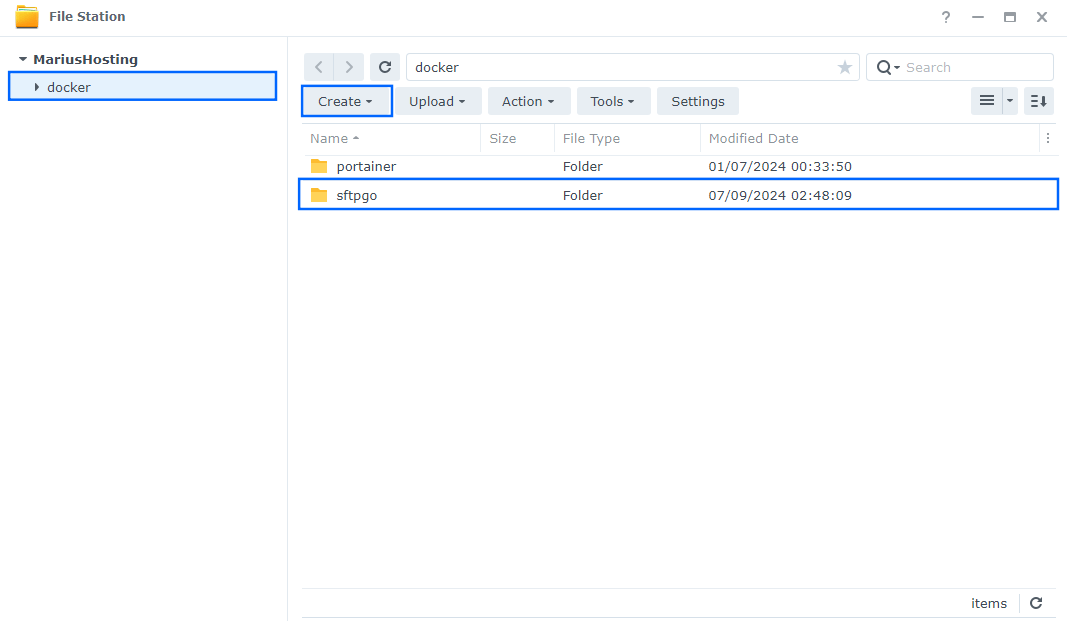
STEP 5
Now create two new folders inside the sftpgo folder that you created at STEP 4 and name them data and db. Follow the instructions in the image below.
Note: Be careful to enter only lowercase, not uppercase letters.
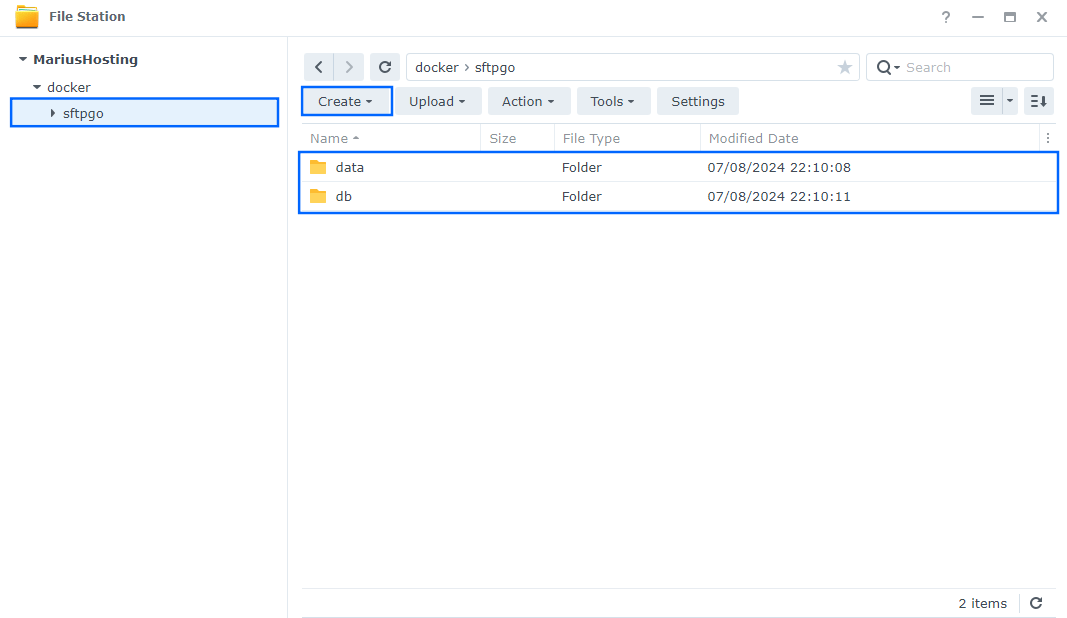
STEP 6
Right click on the sftpgo folder that you have previously created at STEP 4 then click Properties. Follow the instructions in the image below.
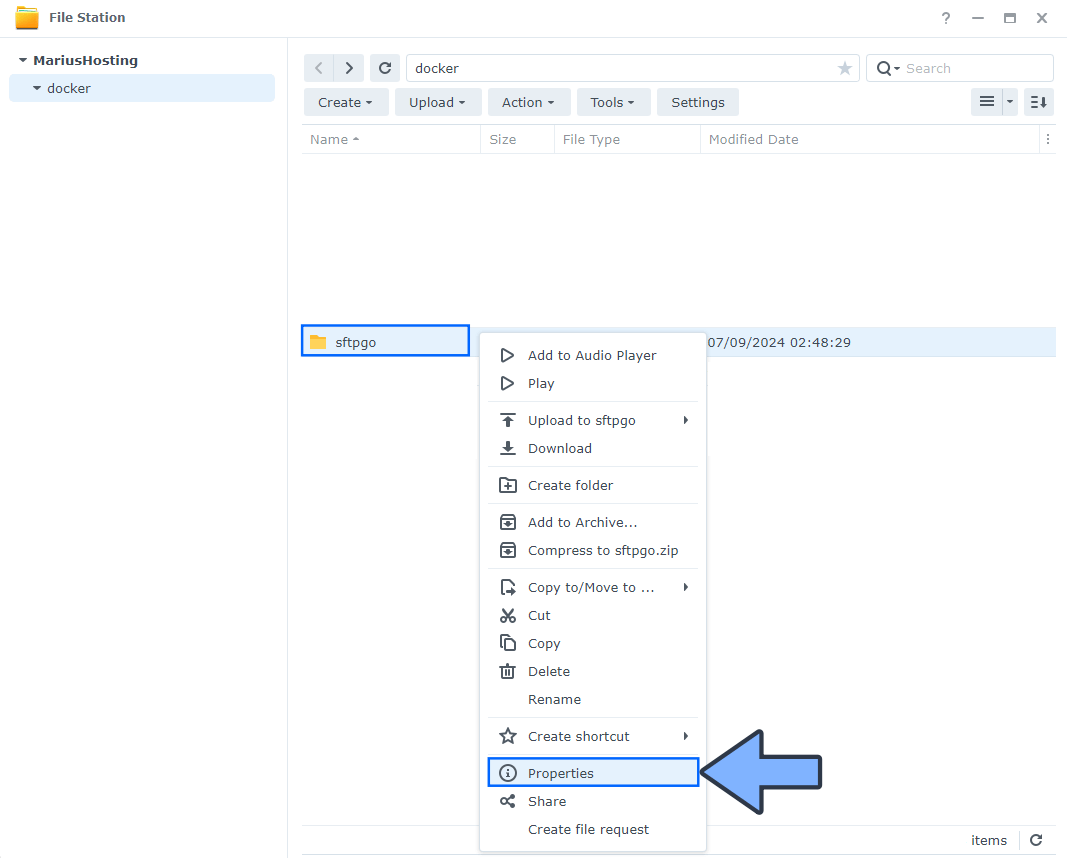
STEP 7
Go to the Permission tab, then click Advanced options. From the drop-down menu, choose “Make inherited permissions explicit“. Follow the instructions in the image below.
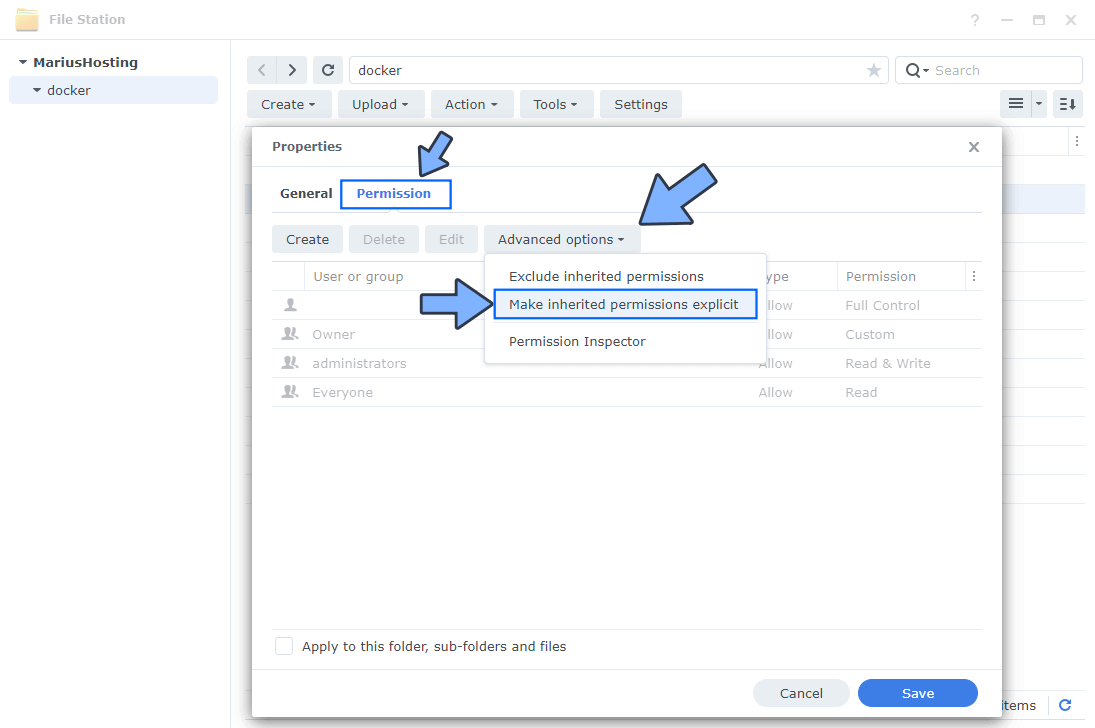
STEP 8
Select Everyone then click the Edit tab. Follow the instructions in the image below.
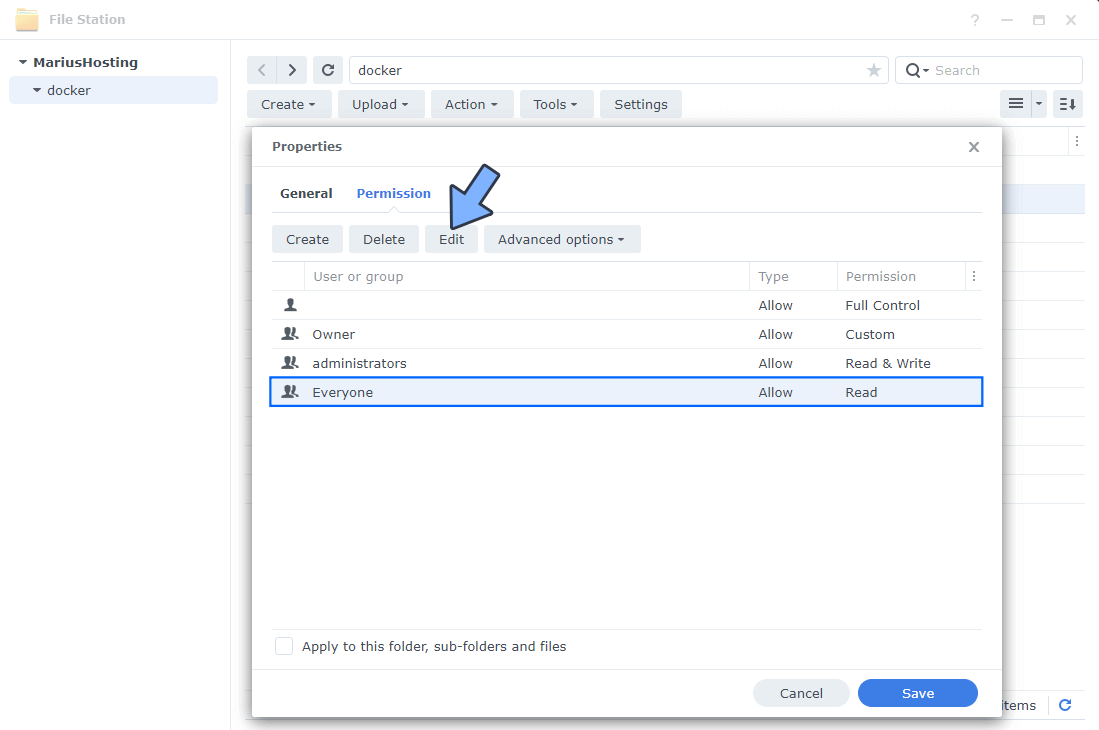
STEP 9
Check all Read and Write Permissions. Click Done. Follow the instructions in the image below.
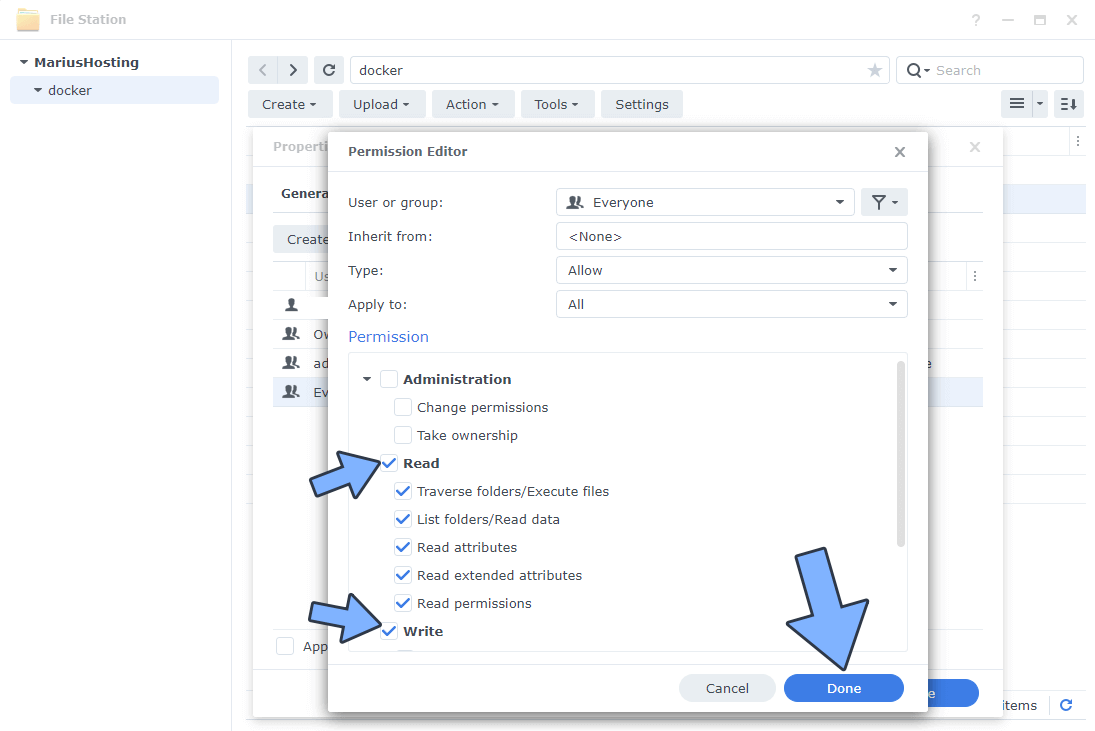
STEP 10
After you click Done on STEP 9, check “Apply to this folder, sub-folders and files“. Click Save. Follow the instructions in the image below.
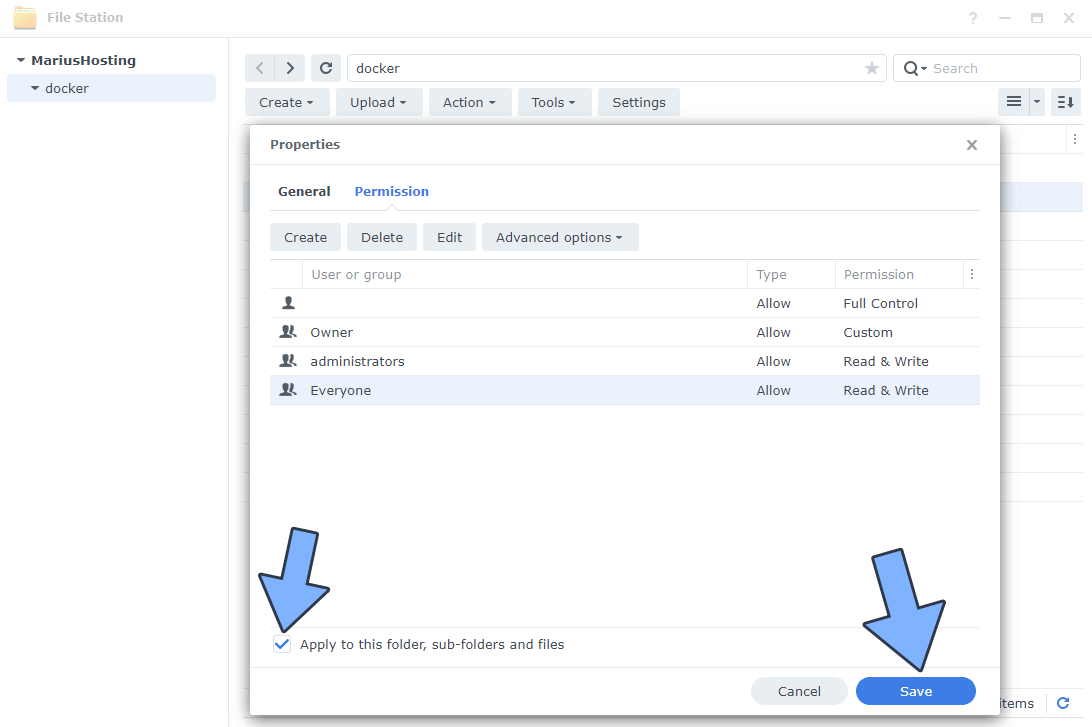
STEP 11
Log into Portainer using your username and password. On the left sidebar in Portainer, click on Home then Live connect. Follow the instructions in the image below.

On the left sidebar in Portainer, click on Stacks then + Add stack. Follow the instructions in the image below.

STEP 12
In the Name field type in sftpgo. Follow the instructions in the image below.
services:
sftpgo:
image: drakkan/sftpgo:latest
user: 1000:1000
container_name: SFTPGo
ports:
- 8813:8080 # HTTP
- 2022:2022 # SFTP
environment:
SFTPGO_WEBDAVD__BINDINGS__0__PORT: 5007
SFTPGO_DATA_PROVIDER__DRIVER: mysql
SFTPGO_DATA_PROVIDER__NAME: sftpgo
SFTPGO_DATA_PROVIDER__HOST: mysql
SFTPGO_DATA_PROVIDER__PORT: 3306
SFTPGO_DATA_PROVIDER__USERNAME: marius
SFTPGO_DATA_PROVIDER__PASSWORD: mariushosting
SFTPGO_COMMON__DEFENDER__ENABLED: true
SFTPGO_COMMON__DEFENDER__BAN_TIME: 15
SFTPGO_COMMON__DEFENDER__BAN_TIME_INCREMENT: 100
SFTPGO_COMMON__DEFENDER__THRESHOLD: 5
SFTPGO_COMMON__DEFENDER__OBSERVATION_TIME: 15
volumes:
- /volume1/docker/sftpgo/data:/srv/sftpgo:rw
restart: on-failure:8
mysql:
image: mariadb:11.4-noble
container_name: SFTPGo-DB
environment:
TZ: Europe/Bucharest
MYSQL_DATABASE: sftpgo
MYSQL_USER: marius
MYSQL_PASSWORD: mariushosting
MYSQL_ROOT_PASSWORD: rootpass
volumes:
- /volume1/docker/sftpgo/db:/var/lib/mysql:rw
restart: on-failure:5
Note: Before you paste the code above in the Web editor area below, change the value for TZ. (Select your current Time Zone from this list.)
Note: Before you paste the code above in the Web editor area below, change the value for SFTPGO_DATA_PROVIDER__USERNAME and MYSQL_USER. marius is an example for a username. The user should be the same for both values.
Note: Before you paste the code above in the Web editor area below, change the value for SFTPGO_DATA_PROVIDER__PASSWORD and MYSQL_PASSWORD. mariushosting is an example for a password. The password should be the same for both values.

STEP 13
Scroll down on the page until you see a button named Deploy the stack. Click on it. Follow the instructions in the image below. The installation process can take up to a few minutes. It will depend on your Internet speed connection.
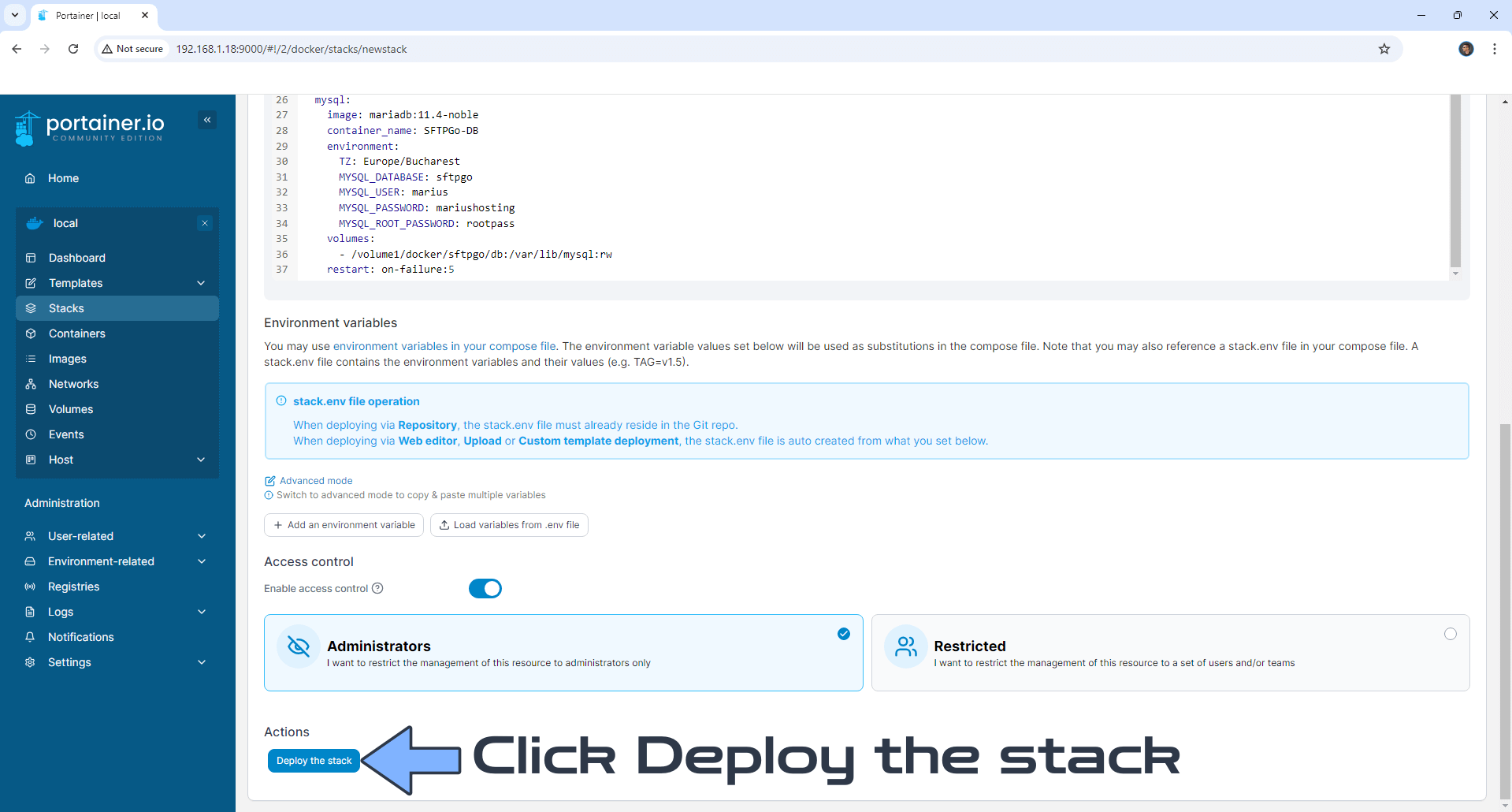
STEP 14
If everything goes right, you will see the following message at the top right of your screen: “Success Stack successfully deployed“.

STEP 15
🟢Please Support My work by Making a Donation. Almost 99,9% of the people that install something using my guides forget to support my work, or just ignore STEP 1. I’ve been very honest about this aspect of my work since the beginning: I don’t run any ADS, I don’t require subscriptions, paid or otherwise, I don’t collect IPs, emails, and I don’t have any referral links from Amazon or other merchants. I also don’t have any POP-UPs or COOKIES. I have repeatedly been told over the years how much I have contributed to the community. It’s something I love doing and have been honest about my passion since the beginning. But I also Need The Community to Support me Back to be able to continue doing this work.
STEP 16
The installation process can take up to a few seconds/minutes. It will depend on your Internet speed connection. Now open your browser and type in http://Synology-ip-address:8813 Create a new WebAdmin user and password, then click Create admin and Sign in. Follow the instructions in the image below.

STEP 17
On the left sidebar, click Users then +Add. Follow the instructions in the image below.
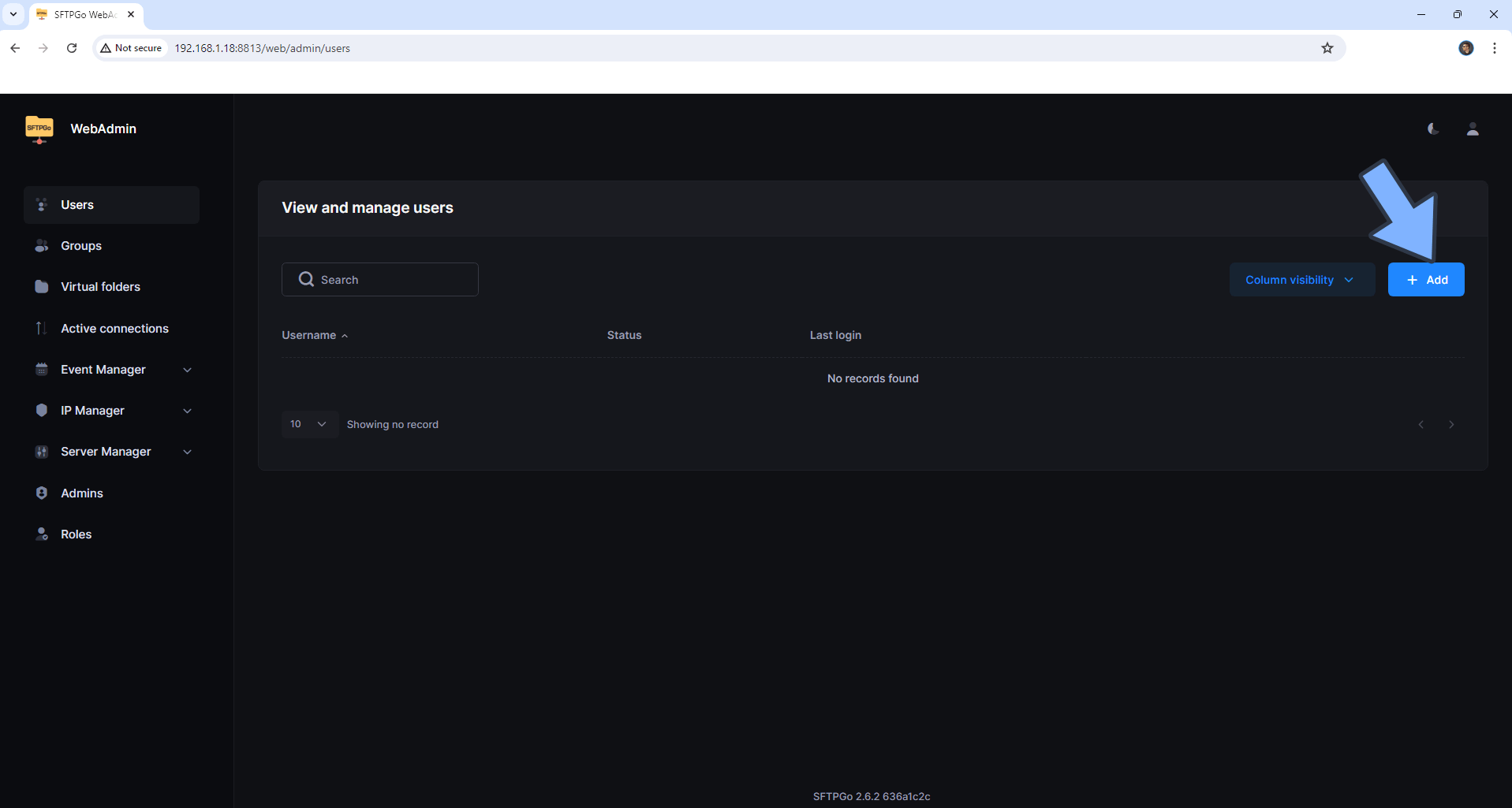
STEP 18
Type in a new username and password for the WebClient interface, then scroll down the page. Follow the instructions in the image below.
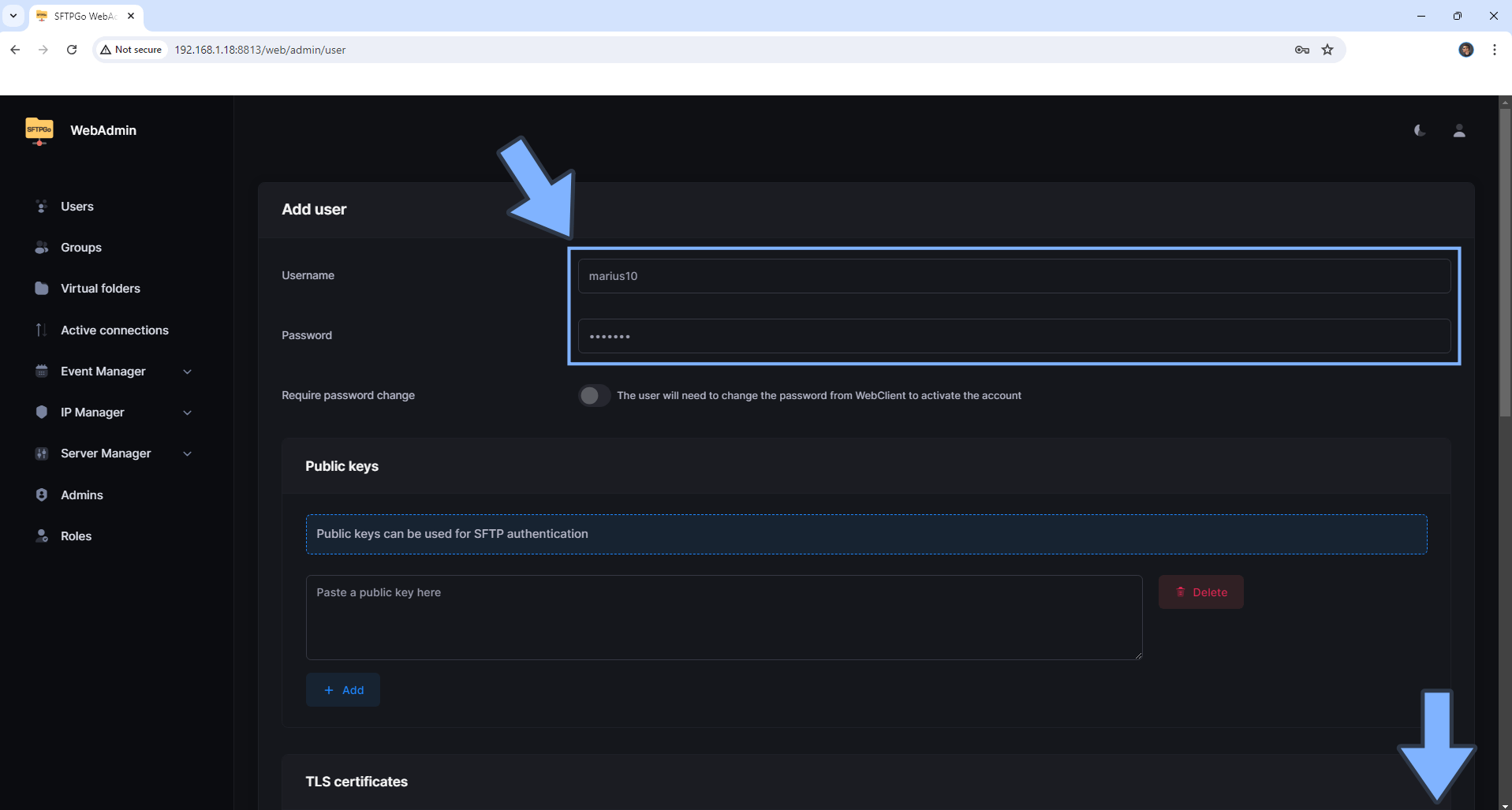
STEP 19
Select Local disk as Storage, then type in /srv/sftpgo for the Root directory, then click Save. Follow the instructions in the image below.
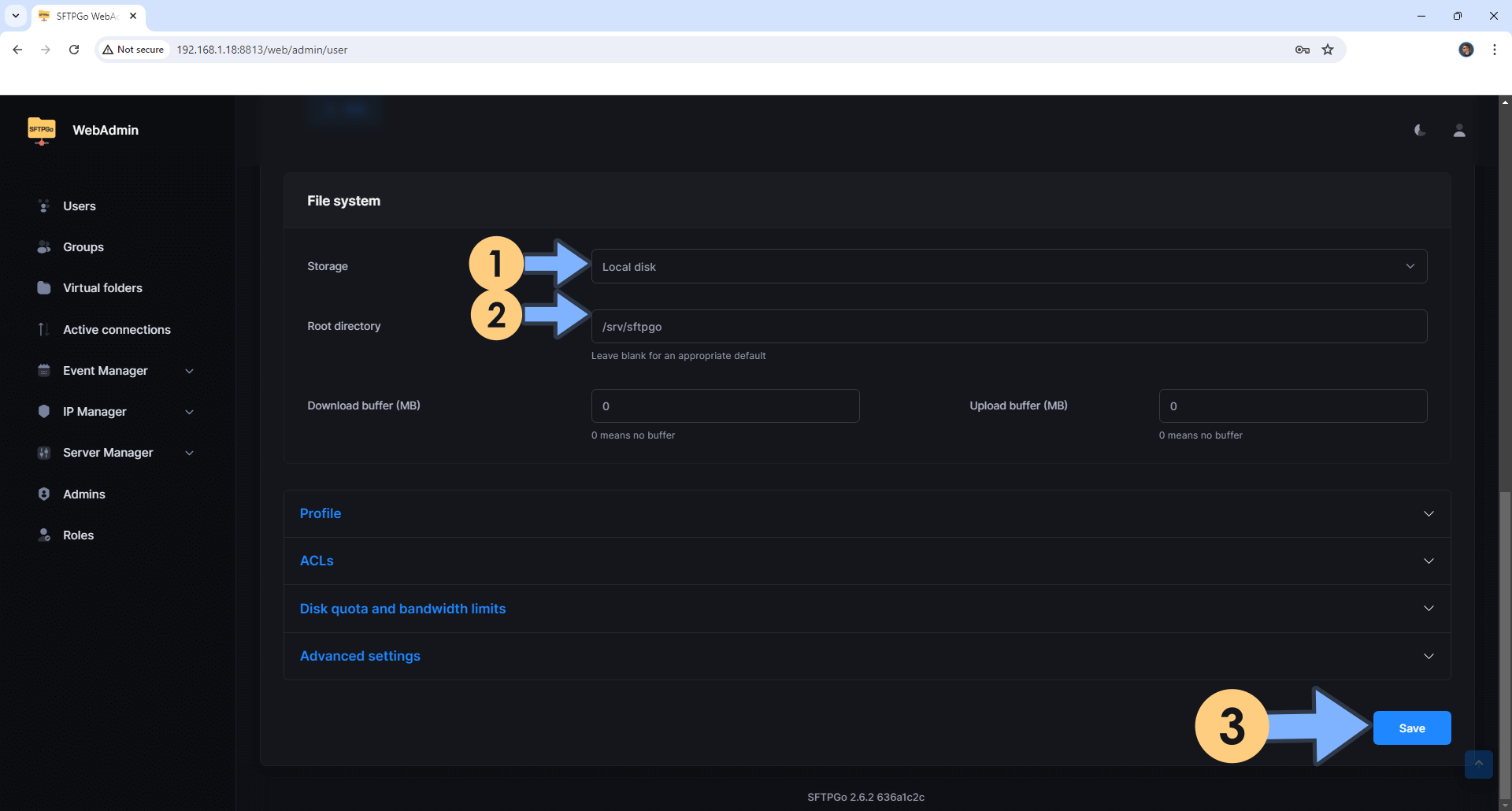
STEP 20
At the top right of the page, click the user icon then Sign out. Follow the instructions in the image below.
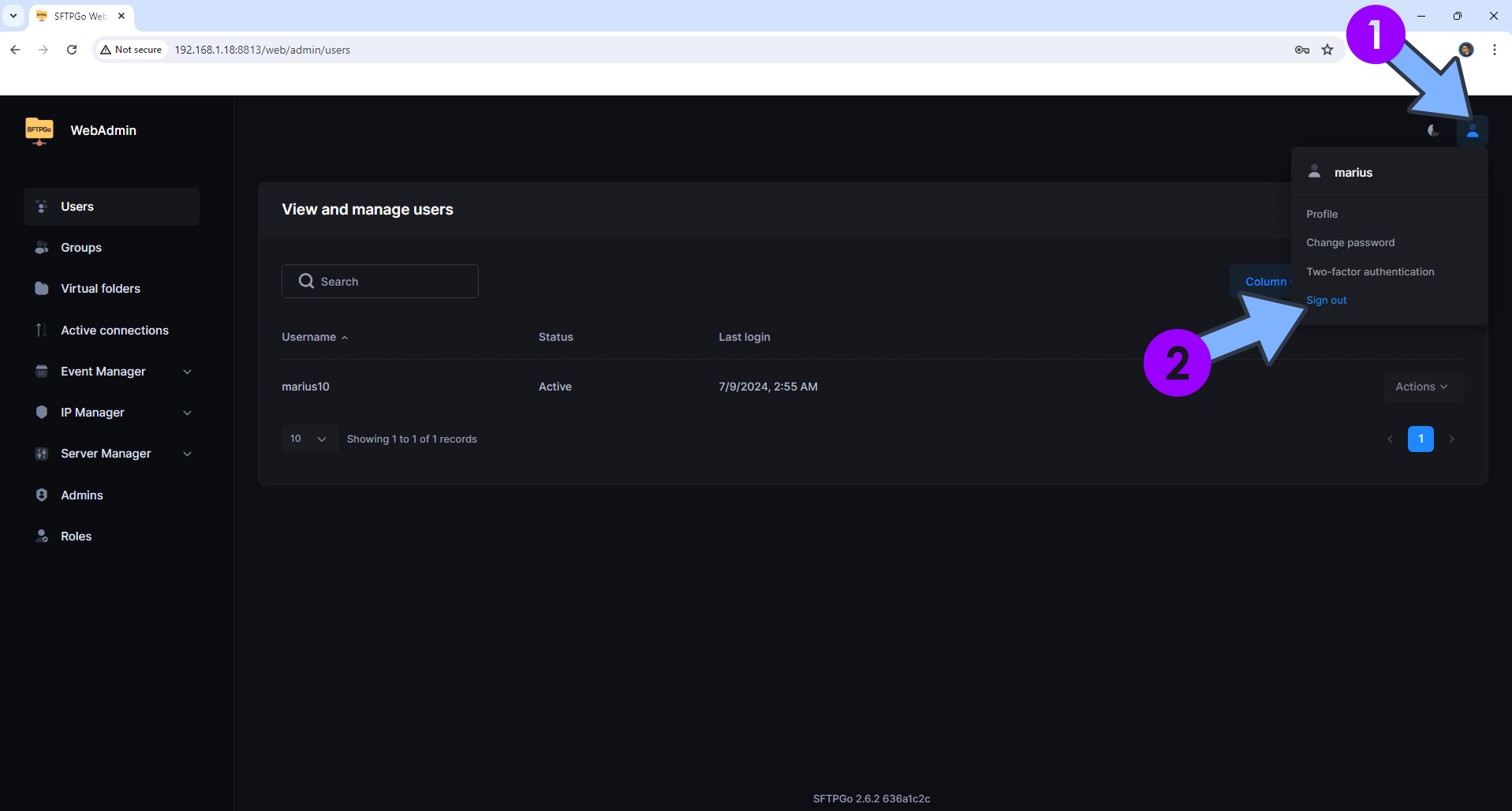
STEP 21
Click Go to WebClient, then type in the username and password for the user that you have previously created at STEP 18. Click Sign in. Follow the instructions in the image below.
💡Remember: The admin interface (WebAdmin) will be available at the following address: http://Synology-ip-address:8813/web/admin/login and the client interface (WebClient) will be available at the following address: http://Synology-ip-address:8813/web/client/login
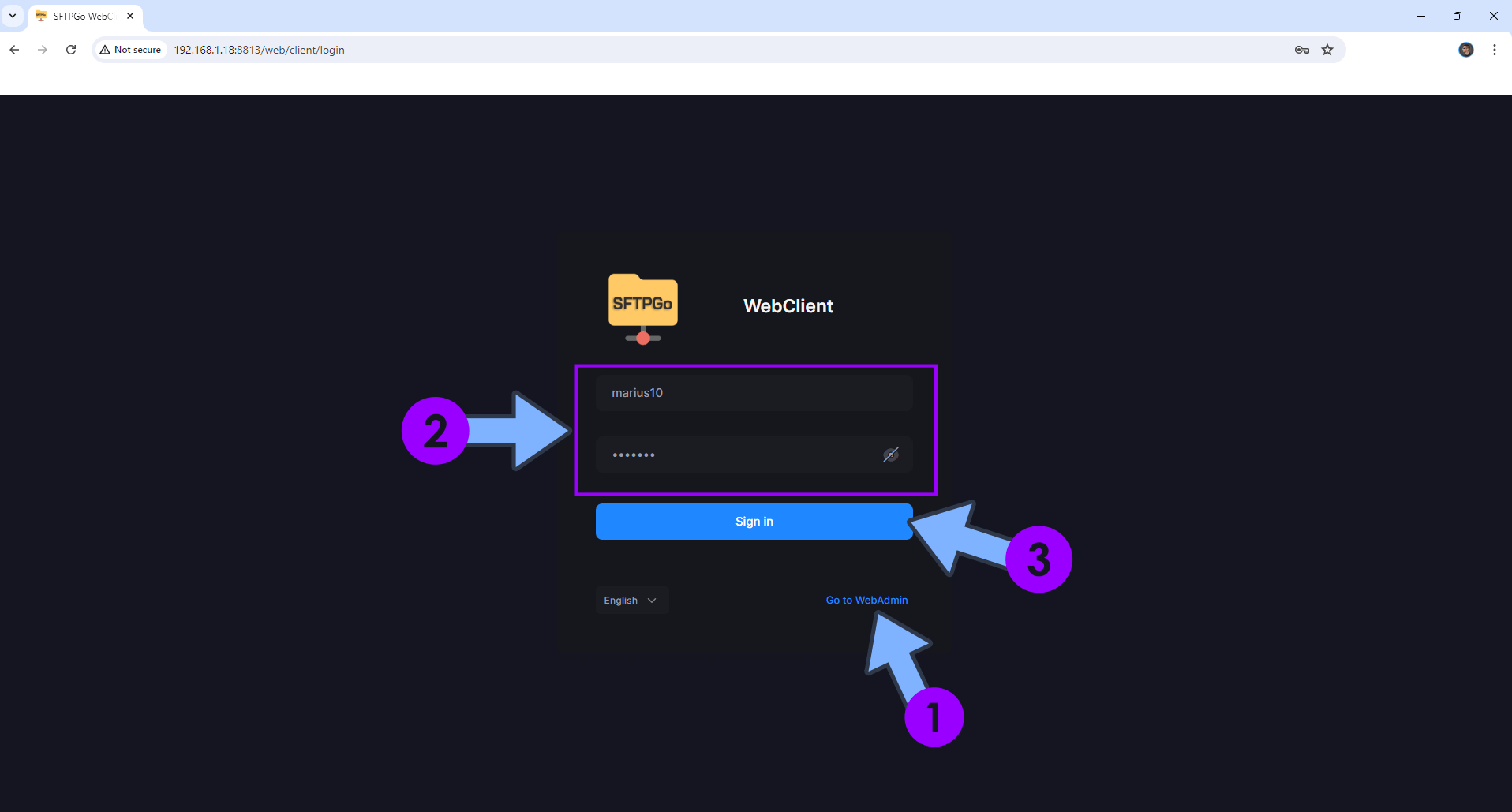
STEP 22
Upload your files. Follow the instructions in the image below.
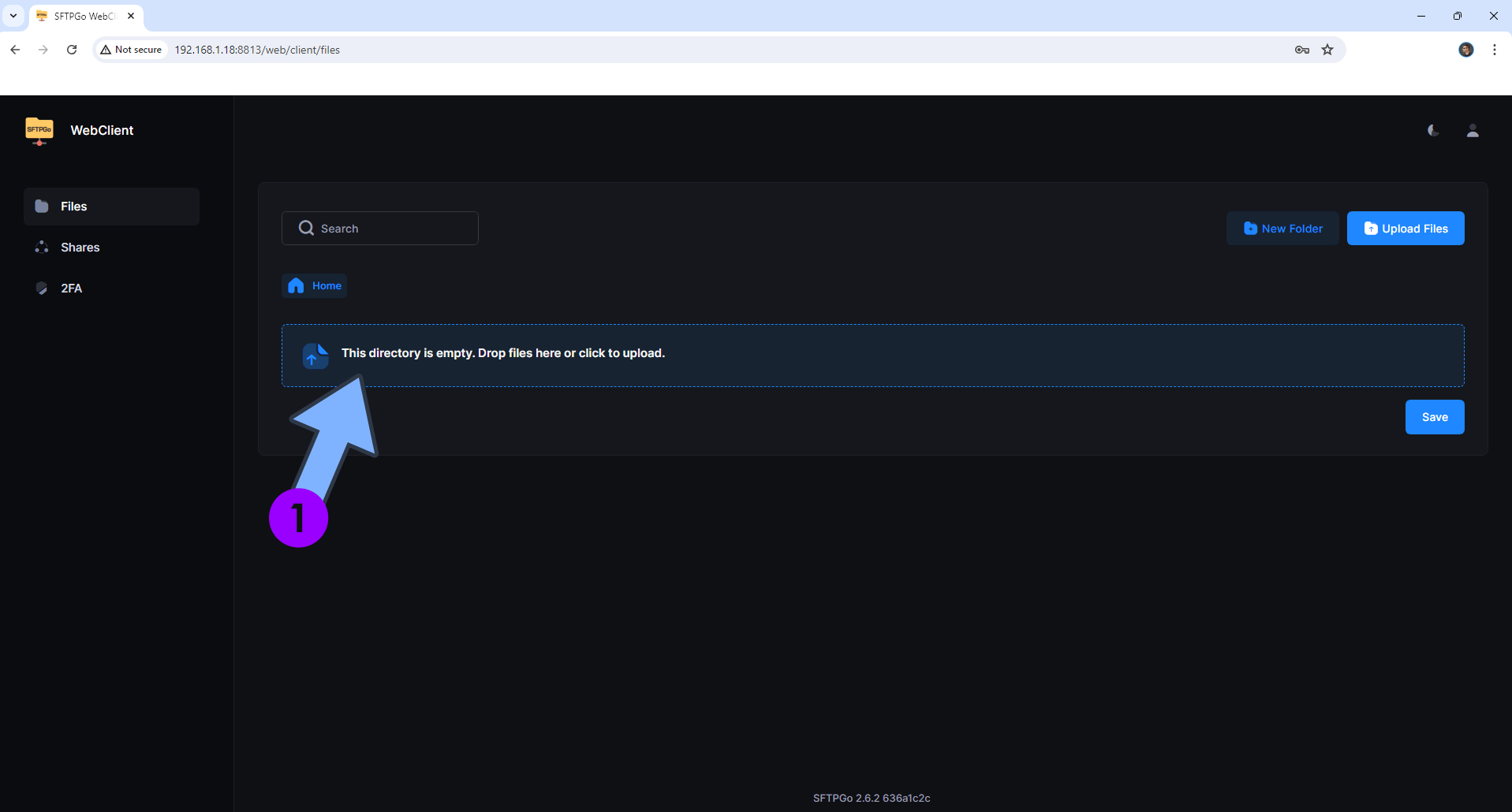
STEP 23
After the files are uploaded, click Save. Follow the instructions in the image below.
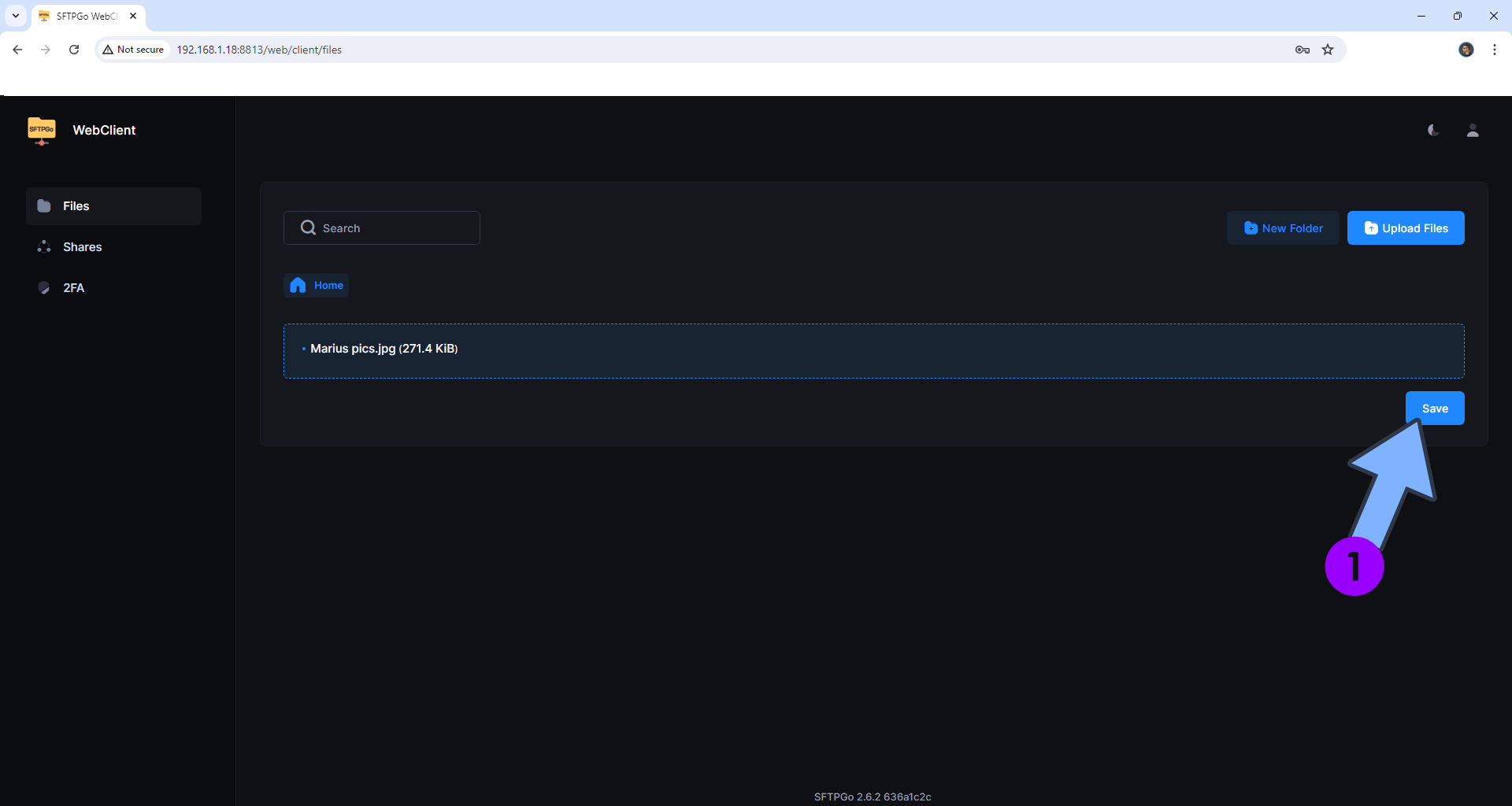
STEP 24
The files will be available in your data folder that you have previously created at STEP 5. 💡Remember: You can upload your files in this folder via File Station and the user that you have previously created at STEP 18 will be able to see all the files via the awesome WebClient interface and download them.
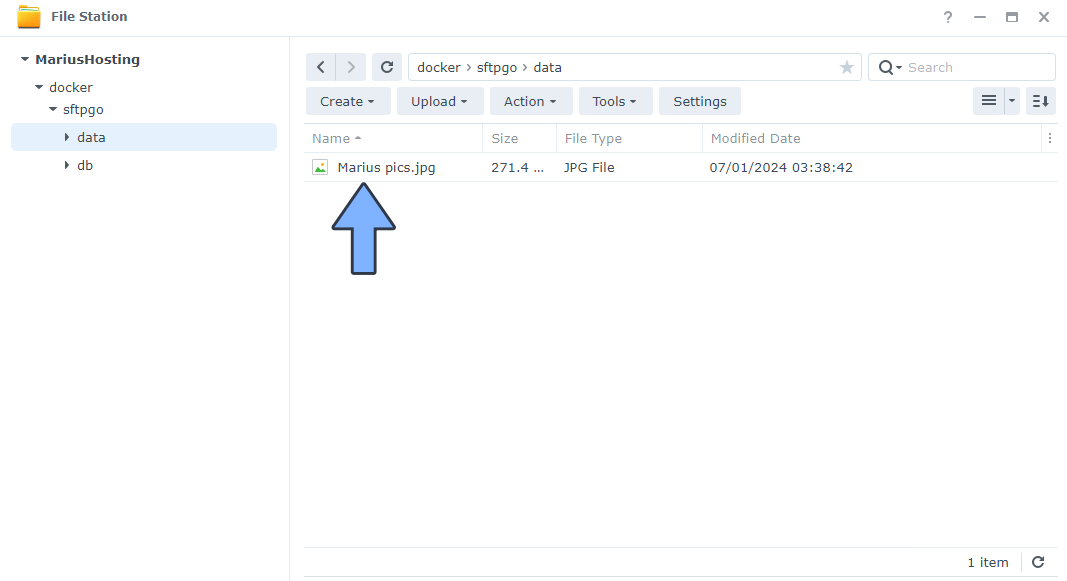
Enjoy SFTPGo!
If you encounter issues by using this container, make sure to check out the Common Docker issues article.
Note: If you want to run the SFTPGo container over HTTPS, check How to Run Docker Containers Over HTTPS. In order to make SFTPGo work via HTTPS, it’s mandatory to activate WebSocket.
Note: Can I run Docker on my Synology NAS? See the supported models.
Note: How to Back Up Docker Containers on your Synology NAS.
Note: Find out how to update the SFTPGo container with the latest image.
Note: How to Free Disk Space on Your NAS if You Run Docker.
Note: How to Schedule Start & Stop For Docker Containers.
Note: How to Activate Email Notifications.
Note: How to Add Access Control Profile on Your NAS.
Note: How to Change Docker Containers Restart Policy.
Note: How to Use Docker Containers With VPN.
Note: Convert Docker Run Into Docker Compose.
Note: How to Clean Docker.
Note: How to Clean Docker Automatically.
Note: Best Practices When Using Docker and DDNS.
Note: Some Docker Containers Need WebSocket.
Note: Find out the Best NAS Models For Docker.
Note: Activate Gmail SMTP For Docker Containers.
This post was updated on Sunday / November 2nd, 2025 at 10:53 PM
